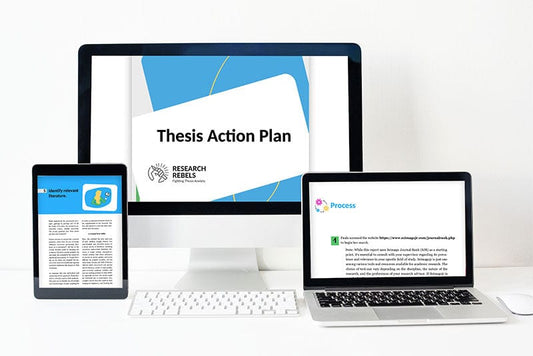How to Write a Thesis: A Step-by-Step Guide with Expert Tips
Writing a thesis can seem like a big task, but breaking it down into steps makes it easier. This guide will help you through each part of the process, from picking your topic to polishing your final draft. Follow these tips to stay organized and confident as you work on your thesis.
Key Takeaways
- Start by identifying a unique research gap to explore.
- Conduct a thorough review of existing literature to support your research.
- Choose methods that fit your research questions and follow ethical guidelines.
- Craft a strong thesis statement to guide your paper.
- Revise and edit your work carefully to ensure clarity and accuracy.
Selecting and Refining Your Research Topic
Choosing the right topic is the foundation of your thesis. Follow these steps to make an informed choice.
Identifying a Research Gap
Selecting a suitable topic is crucial and should be approached with great care. Your subject should interest you, fill a research gap, and be feasible within your available time and resources. Extensive preliminary reading and discussions with advisors are crucial at this stage to refine your topic and formulate precise research questions.
Narrowing Down Your Focus
Consider your interests and the relevance of the topic to your field, and the availability of resources. Talk to your professors or advisors about your topic ideas. They can provide valuable insights and may suggest refinements to your research focus. Ensure your chosen topic is feasible within the scope of your academic program, resources, and timeframe.
Formulating Research Questions
The process of crafting a strong thesis starts with selecting a topic. Of course, it’s so obvious, but selecting a topic isn’t that easy, and it is a very crucial step, so remember a few things while selecting your thesis topic. First of all, the topic should be of your interest because it will make your research more interesting, and second, the topic should not be too broad or too narrow. Ask yourself some questions, like what topics within my field of study am I genuinely passionate about? Is the topic manageable within the scope of a thesis, or is it too broad or narrow? How does my chosen topic contribute to the existing knowledge or debates in my field? Are there any recent developments or emerging trends related to this topic that I can explore?
Conducting a Comprehensive Literature Review
A comprehensive literature review is essential for any thesis. It helps you understand the existing research on your topic and identify where your work can contribute. A well-done literature review will set the foundation for your entire thesis.
Gathering Relevant Sources
Start by collecting credible sources. This includes online journals, periodicals, and books. Make sure to take detailed notes as you review the literature. Record key findings, methodologies, and areas where your research can contribute. This will help you identify gaps and formulate your research question.
Evaluating Existing Research
Once you have gathered your sources, it's time to evaluate them. Look for trends, linkages, and gaps in the available literature. Critically analyze the methodologies used in previous studies. This will help you understand the strengths and weaknesses of the existing research and how your work can add value.
Synthesizing Information
After evaluating your sources, the next step is to synthesize the information. This means summarizing, critiquing, and combining the existing research related to your topic. Present a well-organized review of the literature, highlighting the key points and how they relate to your research. This will provide a clear context for your study and show how it fits into the broader field of research.
Designing a Methodological Framework
When designing your methodological framework, it's crucial to outline the steps you will take as a researcher. This section will guide your project and ensure that your research is structured and credible.
Writing the Thesis Statement
Characteristics of a Strong Thesis Statement
A strong thesis statement clearly presents the main argument of your research. It should be specific, concise, and assertive. Your thesis statement should guide the direction of your paper and set expectations for your readers. Avoid vague language and ensure it directly addresses your research questions.
Common Pitfalls to Avoid
When crafting your thesis statement, steer clear of overly broad claims and unsupported assertions. Avoid using complex jargon that might confuse your readers. Instead, aim for clarity and precision. Remember, a well-defined thesis statement can help reduce thesis anxiety by providing a clear focus for your work.
Examples of Effective Thesis Statements
Here are some examples of effective thesis statements:
- "This paper is divided into an introduction (to contextualize the theme), the methods and data (to present the followed protocol), and sample evolution (to analyze the results)."
- "A bibliometric approach to the thesis of the happy..."
These examples illustrate how a clear and focused thesis statement can set the stage for a well-organized and compelling research paper.
Structuring Your Thesis
Creating a well-organized thesis is crucial for presenting your research clearly. The structure of your thesis will guide the reader through your work, making it easier to understand your findings and arguments. Here are some key aspects to consider when structuring your thesis:
Organizing Chapters and Sections
Start by outlining the main chapters and sections of your thesis. Typically, a thesis includes the following sections:
- Abstract
- Table of contents
- List of tables/figures
- Introduction
- Literature review
- Methodology
- Findings
- Discussion
- Conclusion
- References
- Appendices
Each section should serve a specific purpose and contribute to the overall argument of your thesis.
Creating a Logical Flow
Ensure that your thesis has a logical flow from one section to the next. This can be achieved by using clear headings and subheadings, as well as transitional sentences that link different parts of your thesis. A well-structured thesis will help the reader follow your argument and understand the significance of your research.
Incorporating Visual Aids
Visual aids, such as tables and figures, can enhance the clarity of your thesis. They can be used to present data, illustrate concepts, and summarize findings. When incorporating visual aids, make sure they are clearly labeled and referenced in the text. This will help the reader understand the context and relevance of the visual information.
Revising and Editing Your Work
Revising and editing are crucial steps in the thesis writing process. This phase transforms good writing into excellent writing. Expect to go through multiple rounds of revisions, refining your arguments and clarifying your points. Be prepared to rework sections as needed.
Revising and editing your work is a crucial step in the writing process. It helps you catch mistakes and improve your overall message. If you're struggling with this, don't worry! Our website offers a step-by-step Thesis Action Plan that can guide you through every stage. Visit us today and make your writing process smoother and more effective.
Conclusion
Writing a thesis is a significant academic challenge that requires dedication, critical thinking, and effective time management. By following the steps and tips outlined in this guide, you can approach the thesis-writing process with greater confidence and clarity. Remember, the journey may involve multiple revisions and moments of doubt, but the ultimate goal is to contribute valuable insights to your field of study. Take it one step at a time, stay organized, and don't hesitate to seek help if needed. With perseverance and the right strategies, you can successfully complete your thesis and make a meaningful impact in your academic journey.
Frequently Asked Questions
What is a thesis statement?
A thesis statement is a sentence that clearly expresses the main idea of your paper. It tells the reader what to expect from the rest of the text.
How do I choose a research topic?
Start by thinking about what interests you. Look for a gap in existing research that you can fill. Make sure it's something you can study within the time you have.
What are some tips for conducting a literature review?
Gather sources from reliable places like academic journals. Read and take notes on each source. Look for patterns and gaps in the research.
How can I make my thesis statement strong?
Make sure your thesis statement is clear and specific. It should state your main idea and give a hint of how you will support it.
What should I include in my thesis structure?
Your thesis should have chapters like an introduction, literature review, methodology, results, and conclusion. Make sure each part flows logically to the next.
Why is revising and editing important?
Revising and editing help you catch mistakes and improve your writing. It ensures that your ideas are clear and your arguments are strong.
How to Write a Thesis: A Step-by-Step Guide with Expert Tips
Writing a thesis can seem like a big task, but breaking it down into steps makes it easier. This guide will help you through each part of the process, from picking your topic to polishing your final draft. Follow these tips to stay organized and confident as you work on your thesis.
Key Takeaways
- Start by identifying a unique research gap to explore.
- Conduct a thorough review of existing literature to support your research.
- Choose methods that fit your research questions and follow ethical guidelines.
- Craft a strong thesis statement to guide your paper.
- Revise and edit your work carefully to ensure clarity and accuracy.
Selecting and Refining Your Research Topic
Choosing the right topic is the foundation of your thesis. Follow these steps to make an informed choice.
Identifying a Research Gap
Selecting a suitable topic is crucial and should be approached with great care. Your subject should interest you, fill a research gap, and be feasible within your available time and resources. Extensive preliminary reading and discussions with advisors are crucial at this stage to refine your topic and formulate precise research questions.
Narrowing Down Your Focus
Consider your interests and the relevance of the topic to your field, and the availability of resources. Talk to your professors or advisors about your topic ideas. They can provide valuable insights and may suggest refinements to your research focus. Ensure your chosen topic is feasible within the scope of your academic program, resources, and timeframe.
Formulating Research Questions
The process of crafting a strong thesis starts with selecting a topic. Of course, it’s so obvious, but selecting a topic isn’t that easy, and it is a very crucial step, so remember a few things while selecting your thesis topic. First of all, the topic should be of your interest because it will make your research more interesting, and second, the topic should not be too broad or too narrow. Ask yourself some questions, like what topics within my field of study am I genuinely passionate about? Is the topic manageable within the scope of a thesis, or is it too broad or narrow? How does my chosen topic contribute to the existing knowledge or debates in my field? Are there any recent developments or emerging trends related to this topic that I can explore?
Conducting a Comprehensive Literature Review
A comprehensive literature review is essential for any thesis. It helps you understand the existing research on your topic and identify where your work can contribute. A well-done literature review will set the foundation for your entire thesis.
Gathering Relevant Sources
Start by collecting credible sources. This includes online journals, periodicals, and books. Make sure to take detailed notes as you review the literature. Record key findings, methodologies, and areas where your research can contribute. This will help you identify gaps and formulate your research question.
Evaluating Existing Research
Once you have gathered your sources, it's time to evaluate them. Look for trends, linkages, and gaps in the available literature. Critically analyze the methodologies used in previous studies. This will help you understand the strengths and weaknesses of the existing research and how your work can add value.
Synthesizing Information
After evaluating your sources, the next step is to synthesize the information. This means summarizing, critiquing, and combining the existing research related to your topic. Present a well-organized review of the literature, highlighting the key points and how they relate to your research. This will provide a clear context for your study and show how it fits into the broader field of research.
Designing a Methodological Framework
When designing your methodological framework, it's crucial to outline the steps you will take as a researcher. This section will guide your project and ensure that your research is structured and credible.
Writing the Thesis Statement
Characteristics of a Strong Thesis Statement
A strong thesis statement clearly presents the main argument of your research. It should be specific, concise, and assertive. Your thesis statement should guide the direction of your paper and set expectations for your readers. Avoid vague language and ensure it directly addresses your research questions.
Common Pitfalls to Avoid
When crafting your thesis statement, steer clear of overly broad claims and unsupported assertions. Avoid using complex jargon that might confuse your readers. Instead, aim for clarity and precision. Remember, a well-defined thesis statement can help reduce thesis anxiety by providing a clear focus for your work.
Examples of Effective Thesis Statements
Here are some examples of effective thesis statements:
- "This paper is divided into an introduction (to contextualize the theme), the methods and data (to present the followed protocol), and sample evolution (to analyze the results)."
- "A bibliometric approach to the thesis of the happy..."
These examples illustrate how a clear and focused thesis statement can set the stage for a well-organized and compelling research paper.
Structuring Your Thesis
Creating a well-organized thesis is crucial for presenting your research clearly. The structure of your thesis will guide the reader through your work, making it easier to understand your findings and arguments. Here are some key aspects to consider when structuring your thesis:
Organizing Chapters and Sections
Start by outlining the main chapters and sections of your thesis. Typically, a thesis includes the following sections:
- Abstract
- Table of contents
- List of tables/figures
- Introduction
- Literature review
- Methodology
- Findings
- Discussion
- Conclusion
- References
- Appendices
Each section should serve a specific purpose and contribute to the overall argument of your thesis.
Creating a Logical Flow
Ensure that your thesis has a logical flow from one section to the next. This can be achieved by using clear headings and subheadings, as well as transitional sentences that link different parts of your thesis. A well-structured thesis will help the reader follow your argument and understand the significance of your research.
Incorporating Visual Aids
Visual aids, such as tables and figures, can enhance the clarity of your thesis. They can be used to present data, illustrate concepts, and summarize findings. When incorporating visual aids, make sure they are clearly labeled and referenced in the text. This will help the reader understand the context and relevance of the visual information.
Revising and Editing Your Work
Revising and editing are crucial steps in the thesis writing process. This phase transforms good writing into excellent writing. Expect to go through multiple rounds of revisions, refining your arguments and clarifying your points. Be prepared to rework sections as needed.
Revising and editing your work is a crucial step in the writing process. It helps you catch mistakes and improve your overall message. If you're struggling with this, don't worry! Our website offers a step-by-step Thesis Action Plan that can guide you through every stage. Visit us today and make your writing process smoother and more effective.
Conclusion
Writing a thesis is a significant academic challenge that requires dedication, critical thinking, and effective time management. By following the steps and tips outlined in this guide, you can approach the thesis-writing process with greater confidence and clarity. Remember, the journey may involve multiple revisions and moments of doubt, but the ultimate goal is to contribute valuable insights to your field of study. Take it one step at a time, stay organized, and don't hesitate to seek help if needed. With perseverance and the right strategies, you can successfully complete your thesis and make a meaningful impact in your academic journey.
Frequently Asked Questions
What is a thesis statement?
A thesis statement is a sentence that clearly expresses the main idea of your paper. It tells the reader what to expect from the rest of the text.
How do I choose a research topic?
Start by thinking about what interests you. Look for a gap in existing research that you can fill. Make sure it's something you can study within the time you have.
What are some tips for conducting a literature review?
Gather sources from reliable places like academic journals. Read and take notes on each source. Look for patterns and gaps in the research.
How can I make my thesis statement strong?
Make sure your thesis statement is clear and specific. It should state your main idea and give a hint of how you will support it.
What should I include in my thesis structure?
Your thesis should have chapters like an introduction, literature review, methodology, results, and conclusion. Make sure each part flows logically to the next.
Why is revising and editing important?
Revising and editing help you catch mistakes and improve your writing. It ensures that your ideas are clear and your arguments are strong.
How to Write a Thesis: A Step-by-Step Guide with Expert Tips
Writing a thesis can seem like a big task, but breaking it down into steps makes it easier. This guide will help you through each part of the process, from picking your topic to polishing your final draft. Follow these tips to stay organized and confident as you work on your thesis.
Key Takeaways
- Start by identifying a unique research gap to explore.
- Conduct a thorough review of existing literature to support your research.
- Choose methods that fit your research questions and follow ethical guidelines.
- Craft a strong thesis statement to guide your paper.
- Revise and edit your work carefully to ensure clarity and accuracy.
Selecting and Refining Your Research Topic
Choosing the right topic is the foundation of your thesis. Follow these steps to make an informed choice.
Identifying a Research Gap
Selecting a suitable topic is crucial and should be approached with great care. Your subject should interest you, fill a research gap, and be feasible within your available time and resources. Extensive preliminary reading and discussions with advisors are crucial at this stage to refine your topic and formulate precise research questions.
Narrowing Down Your Focus
Consider your interests and the relevance of the topic to your field, and the availability of resources. Talk to your professors or advisors about your topic ideas. They can provide valuable insights and may suggest refinements to your research focus. Ensure your chosen topic is feasible within the scope of your academic program, resources, and timeframe.
Formulating Research Questions
The process of crafting a strong thesis starts with selecting a topic. Of course, it’s so obvious, but selecting a topic isn’t that easy, and it is a very crucial step, so remember a few things while selecting your thesis topic. First of all, the topic should be of your interest because it will make your research more interesting, and second, the topic should not be too broad or too narrow. Ask yourself some questions, like what topics within my field of study am I genuinely passionate about? Is the topic manageable within the scope of a thesis, or is it too broad or narrow? How does my chosen topic contribute to the existing knowledge or debates in my field? Are there any recent developments or emerging trends related to this topic that I can explore?
Conducting a Comprehensive Literature Review
A comprehensive literature review is essential for any thesis. It helps you understand the existing research on your topic and identify where your work can contribute. A well-done literature review will set the foundation for your entire thesis.
Gathering Relevant Sources
Start by collecting credible sources. This includes online journals, periodicals, and books. Make sure to take detailed notes as you review the literature. Record key findings, methodologies, and areas where your research can contribute. This will help you identify gaps and formulate your research question.
Evaluating Existing Research
Once you have gathered your sources, it's time to evaluate them. Look for trends, linkages, and gaps in the available literature. Critically analyze the methodologies used in previous studies. This will help you understand the strengths and weaknesses of the existing research and how your work can add value.
Synthesizing Information
After evaluating your sources, the next step is to synthesize the information. This means summarizing, critiquing, and combining the existing research related to your topic. Present a well-organized review of the literature, highlighting the key points and how they relate to your research. This will provide a clear context for your study and show how it fits into the broader field of research.
Designing a Methodological Framework
When designing your methodological framework, it's crucial to outline the steps you will take as a researcher. This section will guide your project and ensure that your research is structured and credible.
Writing the Thesis Statement
Characteristics of a Strong Thesis Statement
A strong thesis statement clearly presents the main argument of your research. It should be specific, concise, and assertive. Your thesis statement should guide the direction of your paper and set expectations for your readers. Avoid vague language and ensure it directly addresses your research questions.
Common Pitfalls to Avoid
When crafting your thesis statement, steer clear of overly broad claims and unsupported assertions. Avoid using complex jargon that might confuse your readers. Instead, aim for clarity and precision. Remember, a well-defined thesis statement can help reduce thesis anxiety by providing a clear focus for your work.
Examples of Effective Thesis Statements
Here are some examples of effective thesis statements:
- "This paper is divided into an introduction (to contextualize the theme), the methods and data (to present the followed protocol), and sample evolution (to analyze the results)."
- "A bibliometric approach to the thesis of the happy..."
These examples illustrate how a clear and focused thesis statement can set the stage for a well-organized and compelling research paper.
Structuring Your Thesis
Creating a well-organized thesis is crucial for presenting your research clearly. The structure of your thesis will guide the reader through your work, making it easier to understand your findings and arguments. Here are some key aspects to consider when structuring your thesis:
Organizing Chapters and Sections
Start by outlining the main chapters and sections of your thesis. Typically, a thesis includes the following sections:
- Abstract
- Table of contents
- List of tables/figures
- Introduction
- Literature review
- Methodology
- Findings
- Discussion
- Conclusion
- References
- Appendices
Each section should serve a specific purpose and contribute to the overall argument of your thesis.
Creating a Logical Flow
Ensure that your thesis has a logical flow from one section to the next. This can be achieved by using clear headings and subheadings, as well as transitional sentences that link different parts of your thesis. A well-structured thesis will help the reader follow your argument and understand the significance of your research.
Incorporating Visual Aids
Visual aids, such as tables and figures, can enhance the clarity of your thesis. They can be used to present data, illustrate concepts, and summarize findings. When incorporating visual aids, make sure they are clearly labeled and referenced in the text. This will help the reader understand the context and relevance of the visual information.
Revising and Editing Your Work
Revising and editing are crucial steps in the thesis writing process. This phase transforms good writing into excellent writing. Expect to go through multiple rounds of revisions, refining your arguments and clarifying your points. Be prepared to rework sections as needed.
Revising and editing your work is a crucial step in the writing process. It helps you catch mistakes and improve your overall message. If you're struggling with this, don't worry! Our website offers a step-by-step Thesis Action Plan that can guide you through every stage. Visit us today and make your writing process smoother and more effective.
Conclusion
Writing a thesis is a significant academic challenge that requires dedication, critical thinking, and effective time management. By following the steps and tips outlined in this guide, you can approach the thesis-writing process with greater confidence and clarity. Remember, the journey may involve multiple revisions and moments of doubt, but the ultimate goal is to contribute valuable insights to your field of study. Take it one step at a time, stay organized, and don't hesitate to seek help if needed. With perseverance and the right strategies, you can successfully complete your thesis and make a meaningful impact in your academic journey.
Frequently Asked Questions
What is a thesis statement?
A thesis statement is a sentence that clearly expresses the main idea of your paper. It tells the reader what to expect from the rest of the text.
How do I choose a research topic?
Start by thinking about what interests you. Look for a gap in existing research that you can fill. Make sure it's something you can study within the time you have.
What are some tips for conducting a literature review?
Gather sources from reliable places like academic journals. Read and take notes on each source. Look for patterns and gaps in the research.
How can I make my thesis statement strong?
Make sure your thesis statement is clear and specific. It should state your main idea and give a hint of how you will support it.
What should I include in my thesis structure?
Your thesis should have chapters like an introduction, literature review, methodology, results, and conclusion. Make sure each part flows logically to the next.
Why is revising and editing important?
Revising and editing help you catch mistakes and improve your writing. It ensures that your ideas are clear and your arguments are strong.















